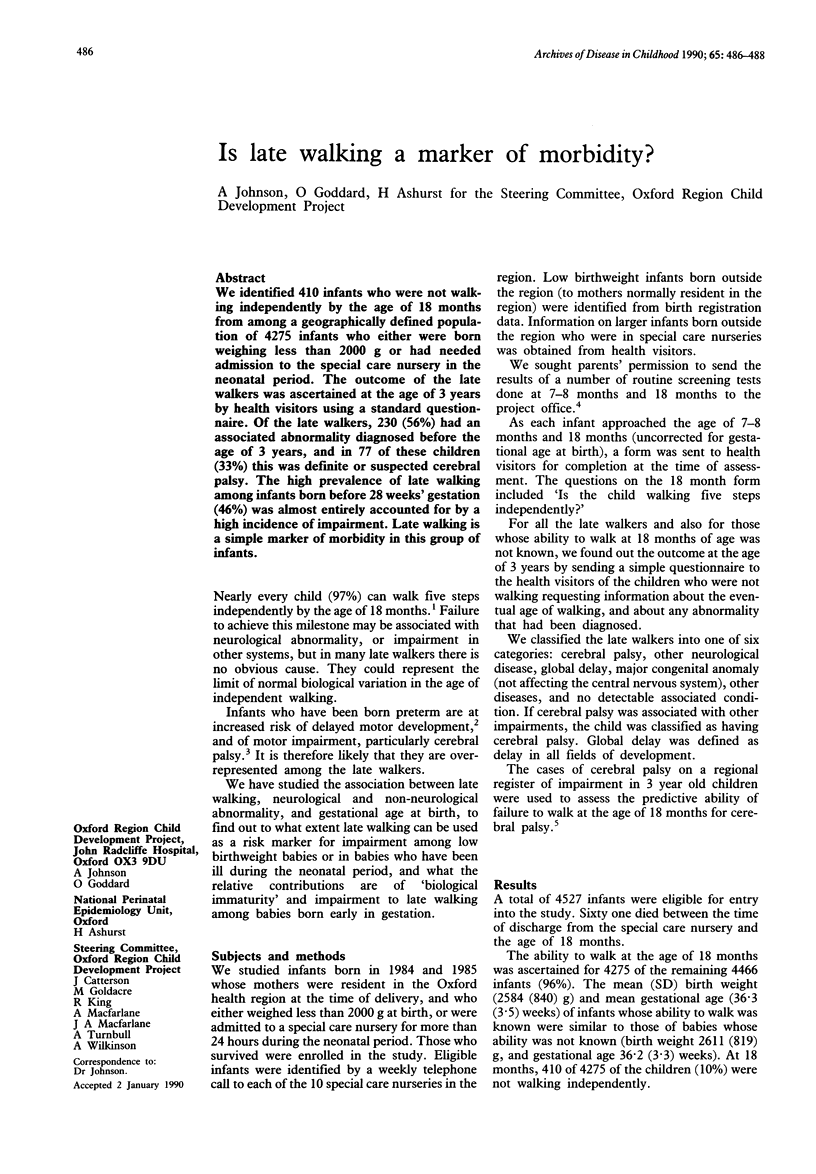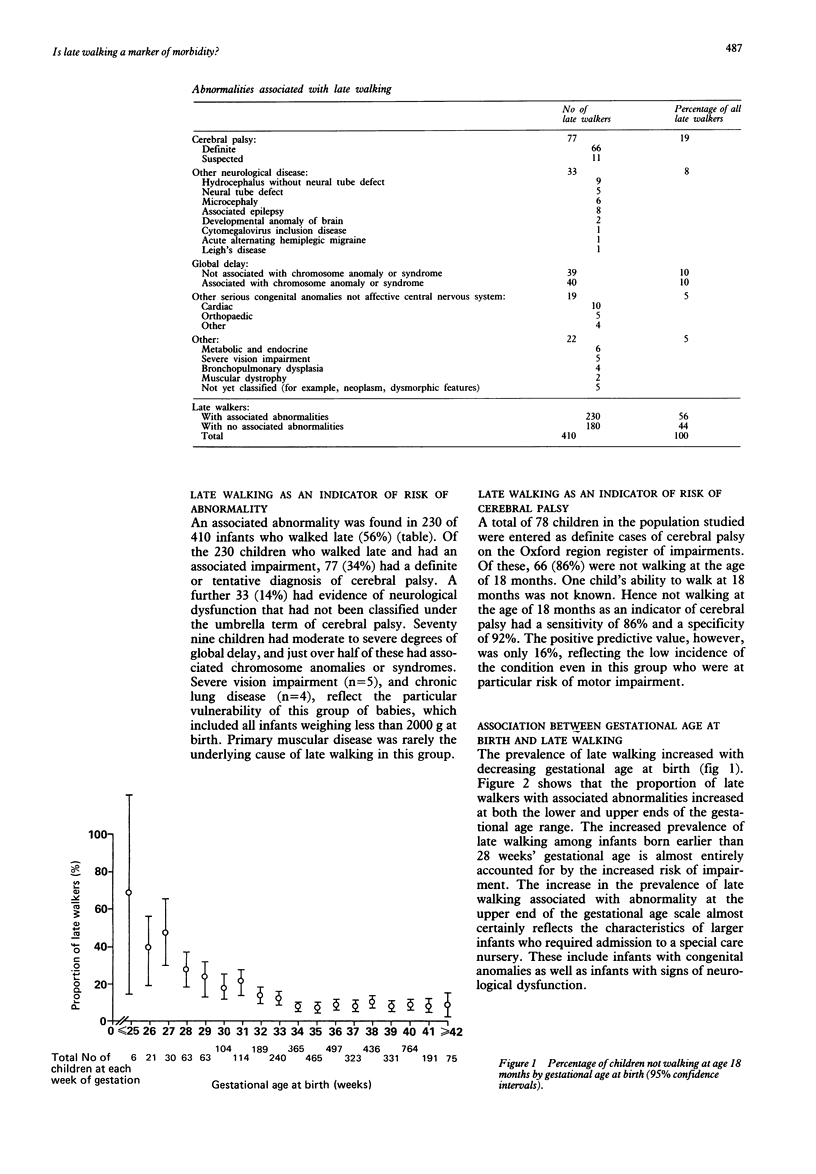Abstract
We identified 410 infants who were not walking independently by the age of 18 months from among a geographically defined population of 4275 infants who either were born weighing less than 2000 g or had needed admission to the special care nursery in the neonatal period. The outcome of the late walkers was ascertained at the age of 3 years by health visitors using a standard questionnaire. Of the late walkers, 230 (56%) had an associated abnormality diagnosed before the age of 3 years, and in 77 of these children (33%) this was definite or suspected cerebral palsy. The high prevalence of late walking among infants born before 28 weeks' gestation (46%) was almost entirely accounted for by a high incidence of impairment. Late walking is a simple marker of morbidity in this group of infants.
Full text
PDF


Selected References
These references are in PubMed. This may not be the complete list of references from this article.
- Chaplais J. D., Macfarlane J. A. A review of 404 'late walkers'. Arch Dis Child. 1984 Jun;59(6):512–516. doi: 10.1136/adc.59.6.512. [DOI] [PMC free article] [PubMed] [Google Scholar]
- Elliman A. M., Bryan E. M., Elliman A. D., Palmer P., Dubowitz L. Denver developmental screening test and preterm infants. Arch Dis Child. 1985 Jan;60(1):20–24. doi: 10.1136/adc.60.1.20. [DOI] [PMC free article] [PubMed] [Google Scholar]
- Hagberg B., Hagberg G., Olow I., von Wendt L. The changing panorama of cerebral palsy in Sweden. V. The birth year period 1979-82. Acta Paediatr Scand. 1989 Mar;78(2):283–290. doi: 10.1111/j.1651-2227.1989.tb11071.x. [DOI] [PubMed] [Google Scholar]
- Miller G., Dubowitz L. M., Palmer P. Follow-up of pre-term infants: is correction of the developmental quotient for prematurity helpful? Early Hum Dev. 1984 Feb;9(2):137–144. doi: 10.1016/0378-3782(84)90094-x. [DOI] [PubMed] [Google Scholar]
- Mutch L., King R. Obtaining parental consent--opting in or opting out? Arch Dis Child. 1985 Oct;60(10):979–980. doi: 10.1136/adc.60.10.979. [DOI] [PMC free article] [PubMed] [Google Scholar]
- Neligan G., Prudham D. Norms for four standard developmental milestones by sex, social class and place in family. Dev Med Child Neurol. 1969 Aug;11(4):413–422. doi: 10.1111/j.1469-8749.1969.tb01459.x. [DOI] [PubMed] [Google Scholar]


